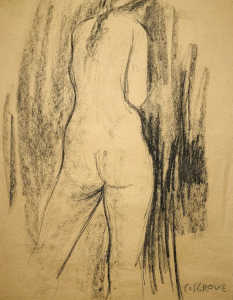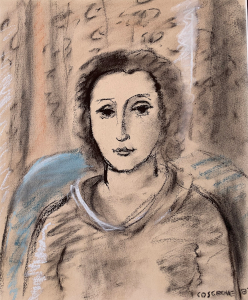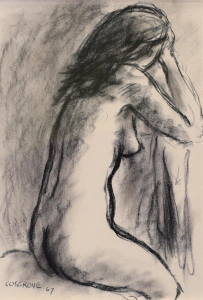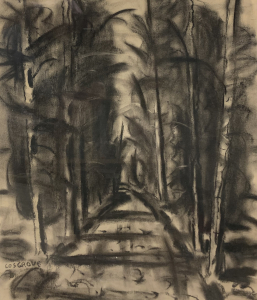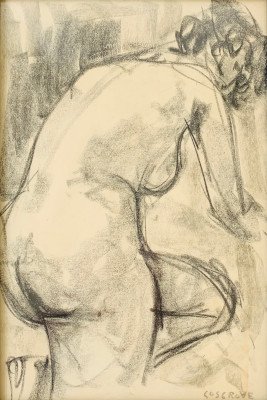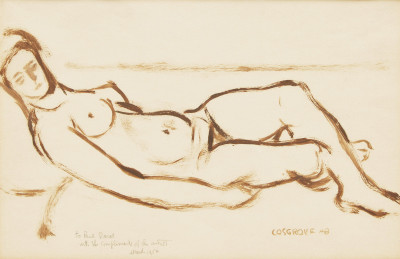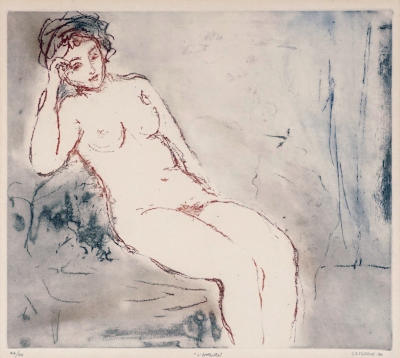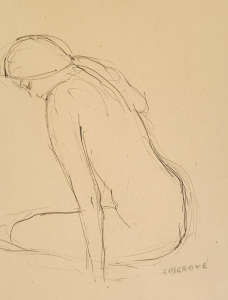sold artworks
Stanley M. Cosgrove, R.C.A.
Canadian , 1911–2002
Selected works
Biography
"They're not trees. They're not trees at all. They're just perpendiculars and horizontals. That's what they are to me. Why do I repeat them? Repetition is what painting is all about, repetition of themes, repetition of subject matter. Paint. That's all a painter wants to do."
(Stanley Cosgrove, 1980)
Stanley Cosgrove was a painter, draughtsman and muralist. Over a seventy-year career, he maintained a consistent artistic path, creating serene figurative representations that explored three principal subjects: forests, women and still lifes. In his paintings, he placed a strong emphasis on formal relationships through an economy of means, with simplified forms and a limited palette.
Cosgrove attended Montreal’s École des Beaux-Arts from 1929 to 1935, studying under Henri Charpentier, Joseph Saint-Charles, and Charles Maillard. At the Art Association of Montreal, he took drawing classes from Edwin Holgate, who became a lifelong friend. After completing his studies, Cosgrove spent several months painting in the Gaspé, with the support of arts benefactor Huntley Drummond, and three summers in the Charlevoix, along with Jean Paul Lemieux, Jean Palardy and Jori Smith.
In 1938, he assisted Holgate in painting a mural for the Canadian pavilion at the New York World’s Fair. The year 1939 proved to be pivotal for Cosgrove. He held his first solo show at the École des Beaux-Arts de Québec, and exhibited with the Contemporary Arts Society and at the Musée du Québec. Then, he was awarded a bursary to study in France. As war had broken out, however, he changed his focus to Mexico, having long taken an interest in that country’s culture and art, particularly in the frescoes of José Clemente Orozco. Cosgrove arrived in Mexico in early 1940 and remained there for four years. He studied under Manuel Rodriguez Lozano at the Academia de San Carlos, Mexico City, and spent eight intensely rewarding months apprenticing with Orozco. From him, Cosgrove learned the fresco techniques that would have an enduring effect on his work: the application of thin, dry layers of paint; the attention to form and composition; the subtle colours.
Cosgrove returned to Montreal at the end of 1943 to take up a part-time teaching position at the École des Beaux-Arts. Over the next decade, he was very productive, participating in numerous exhibitions and signing an exclusive contract with the Dominion Gallery. He joined the Canadian Group of Painters and was elected to the Royal Canadian Academy. In 1953, Cosgrove and his good friend Goodridge Roberts both found themselves painting in the south of France on government bursaries. In 1958, he left his teaching position at the École des Beaux-Arts and, for the next four decades, devoted himself to painting and exhibiting his work.
Awards
Professional Activities
Publications
Cosgrove natures mortes, arbres et portraits Paperback – Mar 1996 by Cosgrove Stanley (Author) Publisher: Roussan (March 1996); ISBN-10: 2921212390
